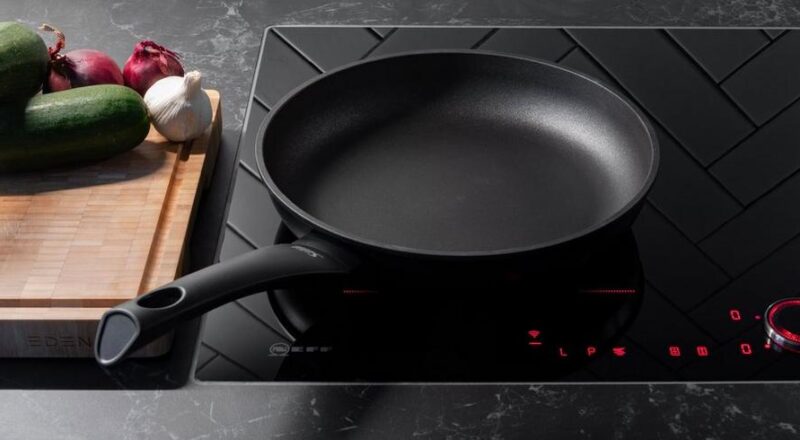Knowing when to re-season cast iron is crucial for maintaining your cookware’s performance and longevity. Cast iron is renowned for its durability and even heat distribution, making it a favorite among kitchen professionals and home cooks alike. However, to keep your cast iron in top condition, it’s essential to understand the signs indicating when it needs re-seasoning.
Seasoning is the process of creating a protective layer on the surface of your cast iron cookware. This layer not only prevents rust but also enhances the non-stick properties of your pan. A well-seasoned cast iron skillet can last for generations, but without proper care, it can quickly deteriorate.

The Importance of Seasoning Cast Iron
A well-seasoned cast iron pan offers multiple benefits. Firstly, it provides a natural, chemical-free non-stick surface, which is ideal for cooking a variety of foods. Secondly, it protects your cookware from rust and corrosion, ensuring its longevity. Lastly, a properly seasoned pan enhances the flavor of your dishes, as the seasoning layer absorbs and retains flavors over time.
Signs Your Cast Iron Needs Re-Seasoning
1. Food Sticking to the Surface
If you notice that food is starting to stick to your cast iron more than usual, it may be time to re-season. This is a common sign that the seasoning layer has worn down and needs reinforcement.
2. Dull and Patchy Appearance
A well-seasoned cast iron should have a smooth, glossy finish. If your pan appears dull or has patchy spots, it indicates that the seasoning is uneven and requires attention.
3. Rust Formation
Rust is a clear indication that your cast iron needs immediate re-seasoning. Even minor rust spots can escalate quickly, so it’s important to address them as soon as they appear.
How to Re-Season Your Cast Iron
1. Clean the Pan Thoroughly
Start by cleaning your cast iron pan with hot water and a stiff brush. Avoid using soap, as it can strip away the existing seasoning. If there are stubborn food residues, use a paste of coarse salt and water to scrub them off.
2. Apply a Thin Layer of Oil
Once the pan is clean and dry, apply a thin layer of cooking oil to the entire surface, including the handle and exterior. Use a high-smoke-point oil, such as vegetable oil or flaxseed oil, for best results.
3. Bake the Pan
Place the oiled pan upside down in an oven preheated to 375F (190C). Line the oven rack with aluminum foil to catch any drips. Bake the pan for one hour, then turn off the oven and let the pan cool completely inside.
Maintaining Your Cast Iron
1. Regular Cleaning
After each use, clean your cast iron with hot water and a brush. Dry it thoroughly to prevent rust formation. Avoid soaking your pan, as prolonged exposure to water can damage the seasoning.
2. Occasional Re-Seasoning
Even with regular maintenance, your cast iron will benefit from occasional re-seasoning. A light seasoning every few months can help maintain its non-stick properties and prevent rust.
3. Proper Storage
Store your cast iron in a dry place to prevent moisture buildup. If stacking multiple pans, place a paper towel between them to absorb any residual moisture.
Common Cast Iron Issues and Solutions
1. Uneven Heating
If your cast iron is not heating evenly, it may be due to cold spots or uneven seasoning. Ensure your stove is level and consider re-seasoning to improve heat distribution. Learn more about uneven heating.
2. Smoky Cooking
Excessive smoke during cooking can be a sign of too much oil or a damaged seasoning layer. Reduce the amount of oil used when cooking and consider re-seasoning your pan. Discover why your cast iron becomes smoky.
3. Rust Spots
If rust spots appear, act quickly to remove them and re-season your cookware. Learn more about dealing with rust spots effectively.
FAQs About Re-Seasoning Cast Iron
1. How often should I re-season my cast iron?
Re-season your cast iron as needed, typically every few months or when you notice signs like food sticking or rust formation.
2. Can I use soap on my cast iron?
It’s best to avoid soap as it can strip the seasoning. Instead, use hot water and a brush for regular cleaning.
3. What oil is best for re-seasoning?
Use a high-smoke-point oil such as vegetable oil or flaxseed oil for effective re-seasoning.

Conclusion
Understanding when to re-season cast iron is vital for its maintenance and longevity. By recognizing the signs and following the proper steps, you can ensure your cast iron cookware remains a reliable kitchen companion for years to come. For more insights into the benefits of using cast iron on induction cooktops, visit Field Company.
This article contains affiliate links. We may earn a commission at no extra cost to you.

